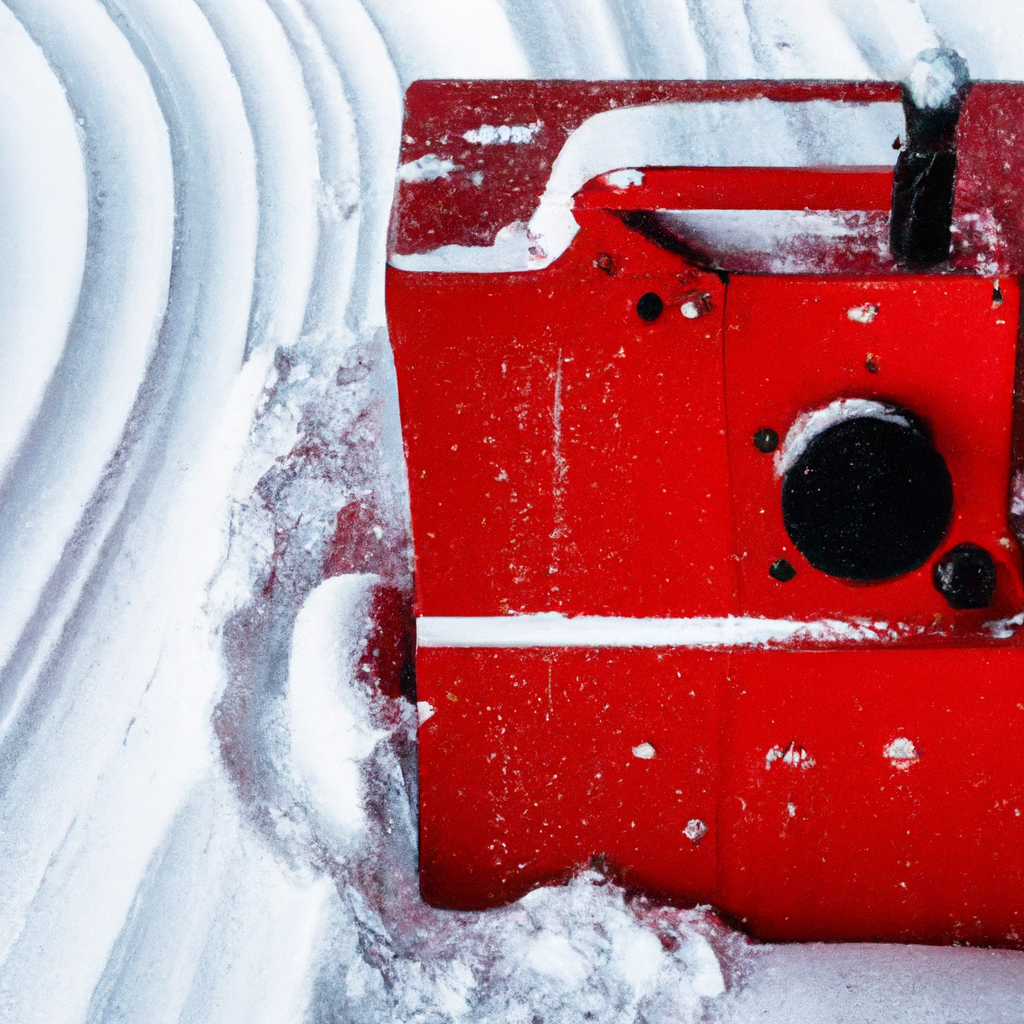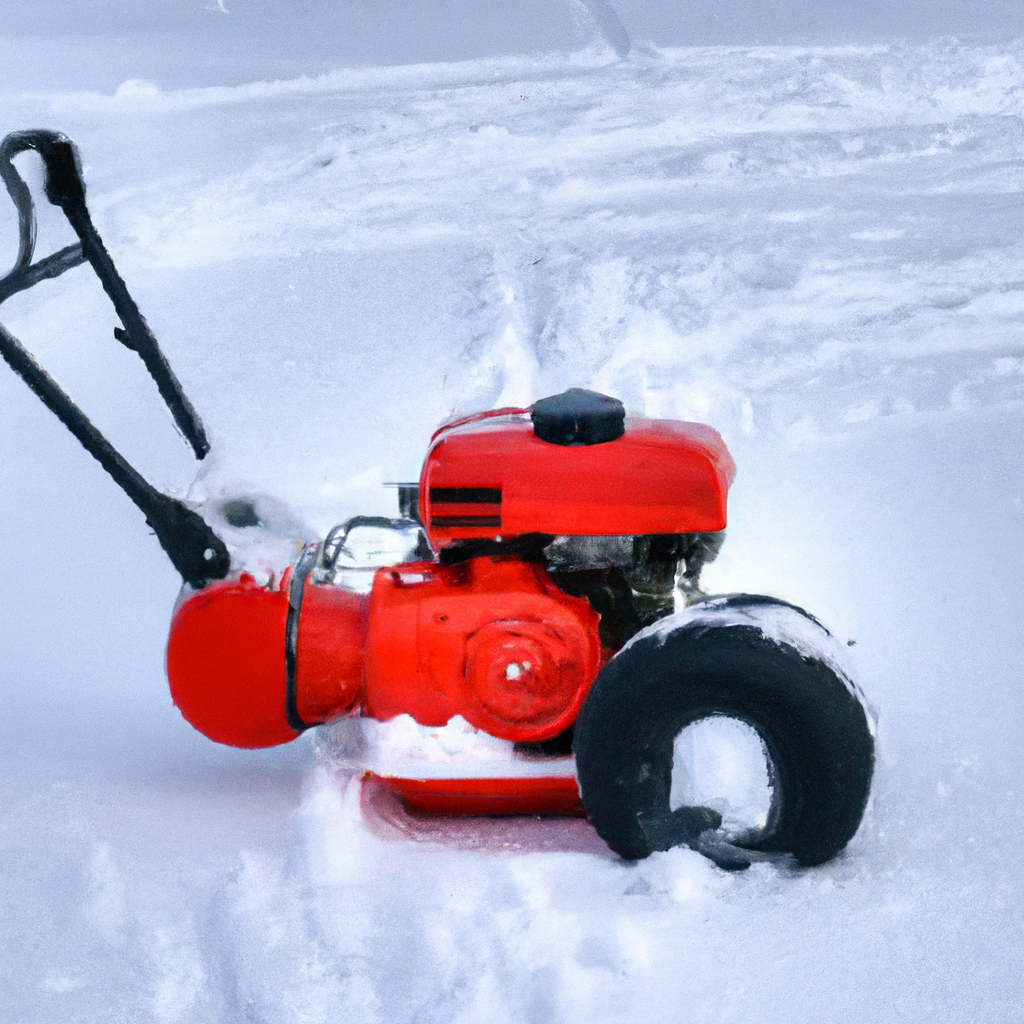We're an affiliate
We hope you love the products we recommend! Just so you know, we may collect a share of sales or other compensation from the links on this page. Thank you if you use our links, we really appreciate it!
Do you ever find yourself wondering if snow blowers need oil? Well, the answer is yes! Snow blowers, like any other machinery, require oil for smooth operation and to prevent damage. Whether you have a gas-powered or electric snow blower, oil is vital for lubricating the engine’s moving parts and ensuring optimal performance. Without proper lubrication, you risk overheating, increased fuel consumption, and potential engine failure. So, if you want to keep your snow blower running efficiently during those cold winter months, don’t forget to check and maintain its oil levels regularly.
Snow Blower Basics
Snow blowers are essential equipment during the winter season when snowfall covers driveways, sidewalks, and other surfaces. Whether you need to clear a small walkway or a large driveway, a snow blower can make the task significantly easier and more efficient. However, like any other machinery, snow blowers require regular maintenance to ensure optimal performance and longevity.
Different Types of Snow Blowers
Before delving into the importance of oil in snow blowers, it is crucial to understand the different types available in the market. Snow blowers generally fall into three main categories: single-stage, two-stage, and three-stage.
Single-Stage Snow Blowers
Single-stage snow blowers are ideal for clearing light to moderate snowfall, typically up to a depth of 8 inches. These snow blowers have an auger that both collects and throws the snow, effectively clearing your path. They are lightweight, compact, and easy to maneuver, making them ideal for small areas such as decks, porches, and walkways.
Two-Stage Snow Blowers
Two-stage snow blowers are designed to handle heavier snowfall and can effectively clear snow up to 12-16 inches deep. They feature an auger that collects the snow and an impeller that throws it out through a discharge chute. These snow blowers are generally more powerful than single-stage ones, making them suitable for medium-sized driveways and larger areas.
Three-Stage Snow Blowers
Three-stage snow blowers are the most powerful and heavy-duty option, capable of tackling deep snow up to 18-24 inches. They have an accelerator in addition to the auger and impeller, which helps break up compacted snow and ice, delivering ultimate clearing performance. Three-stage snow blowers are ideal for large driveways, commercial areas, or regions with heavy snowfall.
The Importance of Oil in Snow Blowers
Now that you have a clearer understanding of the different types of snow blowers available, let’s explore why oil is vital for their proper functioning.
Lubrication for Engine Components
One of the primary purposes of oil in a snow blower is to provide lubrication to the engine’s internal components. The engine comprises many moving parts that depend on oil to reduce friction and prevent premature wear and tear. The oil forms a protective film that minimizes metal-to-metal contact, ensuring smooth operation and extending the lifespan of the engine.
Preventative Maintenance
Regular oil changes play a crucial role in the preventative maintenance of your snow blower. The oil not only lubricates the engine but also helps remove impurities and debris, preventing them from causing blockages or damage to the engine. By following a proper oil change schedule, you can keep your snow blower operating at its best and avoid costly repairs down the line.
Optimal Performance
Using the correct oil and maintaining proper levels is essential for achieving optimal performance from your snow blower. The oil provides thermal stability, ensuring the engine operates smoothly even in cold temperatures. It helps keep the engine cool, preventing overheating, and enables efficient power delivery to the auger and impeller, enabling them to tackle snow with ease.

Common Oil Types for Snow Blowers
Now that you understand why oil is crucial for snow blowers, let’s explore the different types of oils typically used.
Non-Detergent Oils
Non-detergent oils are commonly used in snow blowers. They lack additives that can potentially cause clogging or damage in the snow blower’s engine. Non-detergent oils are specifically designed for small engines and provide adequate lubrication while preventing harmful deposits from accumulating.
Multi-Viscosity Oils
Multi-viscosity oils are formulated to perform well in a wide range of temperatures. These oils have additives that allow them to maintain consistent viscosity, ensuring smooth operation even in colder environments. They are a popular choice for snow blowers, as they provide the necessary protection against wear and tear while accommodating varying weather conditions.
Synthetic Oils
Synthetic oils are known for their exceptional lubricating properties and high temperature stability. Although these oils are pricier compared to conventional options, they offer superior performance and protection. Synthetic oils resist breakdown and provide excellent cold start-up protection, making them a reliable choice for harsh winter conditions.
Oil Capacity and Recommendations
When it comes to oil capacity in snow blowers, it is essential to refer to the manufacturer’s instructions and recommendations.
Checking the Owner’s Manual
To determine the correct oil capacity for your snow blower, consult the owner’s manual. The manual will provide specific details regarding the type of oil to use, the recommended oil change interval, and the optimal oil capacity for your particular model. Following the manufacturer’s guidelines is critical to ensure proper maintenance and prevent potential damage.
Determining the Proper Oil Capacity
Typically, snow blowers have a small engine capacity ranging from 4 to 15 horsepower. The oil capacity corresponds to the engine size, and it is vital to maintain the correct fill level. Overfilling or underfilling the oil can lead to inadequate lubrication or excessive foaming, both of which can hinder the snow blower’s performance and potentially damage the engine.

Frequency of Oil Changes
Regular oil changes are an integral part of snow blower maintenance. However, the frequency of oil changes can vary depending on usage and environmental conditions.
Regular Maintenance Schedule
As a general rule of thumb, it is recommended to change the oil in your snow blower at the beginning of each winter season. This ensures the oil is fresh and can provide optimal lubrication and protection during the harsh cold months. However, if you frequently use your snow blower or operate it in demanding conditions, more frequent oil changes may be necessary.
Conditions that May Require More Frequent Oil Changes
If you frequently encounter wet or slushy snow or operate your snow blower in extremely cold temperatures, it may be advisable to change the oil more often. Wet conditions can cause the oil to become contaminated with water, reducing its effectiveness. Extremely low temperatures can also affect oil viscosity, making it necessary to switch to a lower viscosity oil or change the oil more frequently to maintain proper lubrication.
Steps to Change Oil in a Snow Blower
Changing the oil in your snow blower is a straightforward process that can be easily done at home with the right tools and materials. Follow these steps to ensure a successful oil change:
Gather Necessary Tools and Materials
Before beginning the oil change process, gather the necessary tools and materials. You will need a suitable drain pan or container to collect the used oil, a wrench or socket set to remove the drain plug, clean rags for wiping any spills, and the appropriate type and amount of fresh oil as recommended in the owner’s manual.
Drain the Old Oil
Start by warming up the snow blower’s engine for a few minutes to ensure the oil is warm and flows more freely. Then, locate the oil drain plug underneath the engine and place the drain pan directly beneath it. Loosen the drain plug with the wrench or socket set and let the old oil drain completely into the pan. Be sure to dispose of the used oil properly at a local recycling center or designated facility.
Replace the Oil Filter (if applicable)
Some snow blower models may be equipped with an oil filter. If your snow blower has an oil filter, it is recommended to replace it during the oil change. Remove the old filter by unscrewing it counterclockwise, ensuring not to spill any oil. Apply a thin layer of new oil to the rubber gasket of the new filter, then screw it on clockwise until it is hand-tight.
Refill with Fresh Oil
With the old oil drained and the oil filter replaced (if applicable), it is time to refill the snow blower with fresh oil. Refer to the owner’s manual for the recommended oil type and capacity. Slowly pour the oil into the fill tube, periodically checking the oil level with the dipstick or sight glass until it reaches the appropriate level. Take care not to overfill the oil reservoir.
Dispose of Used Oil Properly
Once the oil change is complete, it is essential to dispose of the used oil responsibly. Improper disposal can harm the environment and be illegal in many areas. Check with your local recycling center or authorized disposal location for guidelines on how to properly dispose of used oil.
Signs of Insufficient Oil Levels
Monitoring the oil levels in your snow blower is crucial to prevent potential damage. Here are some signs indicating insufficient oil levels:
Unusual Engine Noise
If you notice unusual knocking or grinding noises coming from your snow blower’s engine, it could be a sign of inadequate lubrication. When the oil level is too low, the engine’s moving components may start to rub against each other, resulting in increased friction and abnormal sounds.
Excessive Engine Heat
Insufficient oil can cause the engine to overheat. If your snow blower feels excessively hot to the touch, it may be an indication that the oil is unable to dissipate the engine’s heat effectively. Operating the snow blower in this condition can lead to severe engine damage.
Smoke or Oil Leaks
If you observe smoke emanating from the snow blower’s engine or notice oil leaks, it is essential to inspect the oil levels immediately. Low oil levels can cause the engine to generate excessive heat, leading to smoke or oil leaks. Addressing these issues promptly can prevent further damage.
Safety Considerations
When working with a snow blower, it is essential to prioritize safety. Here are some safety considerations to keep in mind when changing the oil or performing maintenance:
Follow Manufacturer Instructions
Always refer to the manufacturer’s instructions for specific safety guidelines and procedures for your particular snow blower model. Different snow blowers may have varying requirements and precautions, so understanding and following these guidelines is crucial for your safety and the longevity of the equipment.
Protective Gear
Wear appropriate protective gear, such as gloves and safety glasses, when performing maintenance on your snow blower. This will help protect your hands and eyes from potential injuries caused by sharp or moving parts.
Proper Storage of Oil Containers
When storing oil containers, ensure they are kept in a cool, dry place away from direct sunlight or extreme temperatures. Additionally, make sure the containers are tightly sealed to prevent any leakage or contamination.
Final Thoughts
Maintaining the longevity of your snow blower requires regular maintenance and proper care. Oil is undoubtedly a vital component in keeping your snow blower running smoothly and efficiently. By understanding the different types of snow blowers, the importance of oil, and following the recommended oil change schedule, you can ensure optimal performance and maximize the lifespan of your snow blower. Remember to always refer to the owner’s manual for specific guidelines and safety considerations. Stay safe, keep your snow blower properly lubricated, and enjoy the convenience of effortless snow clearing all winter long.

